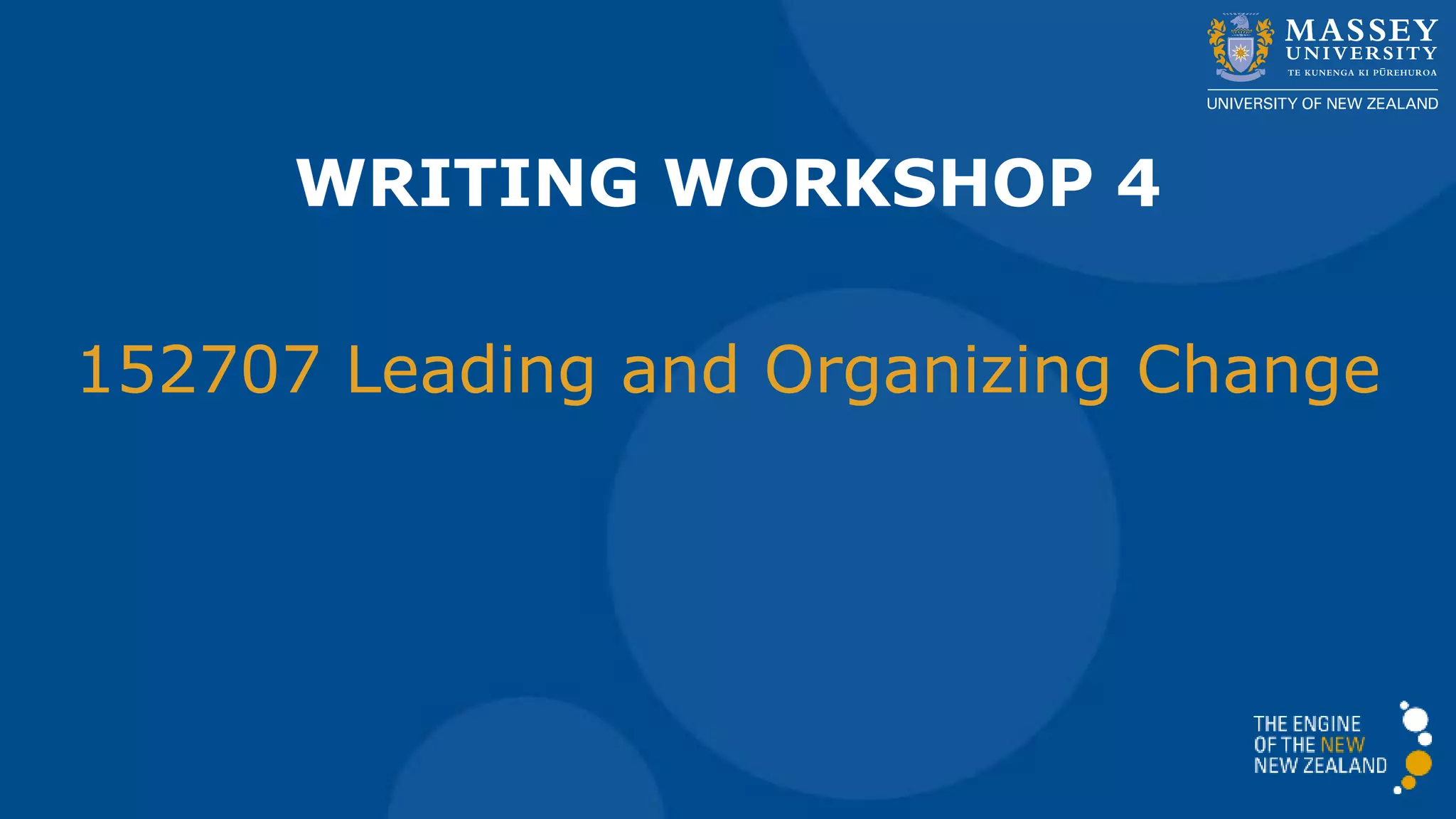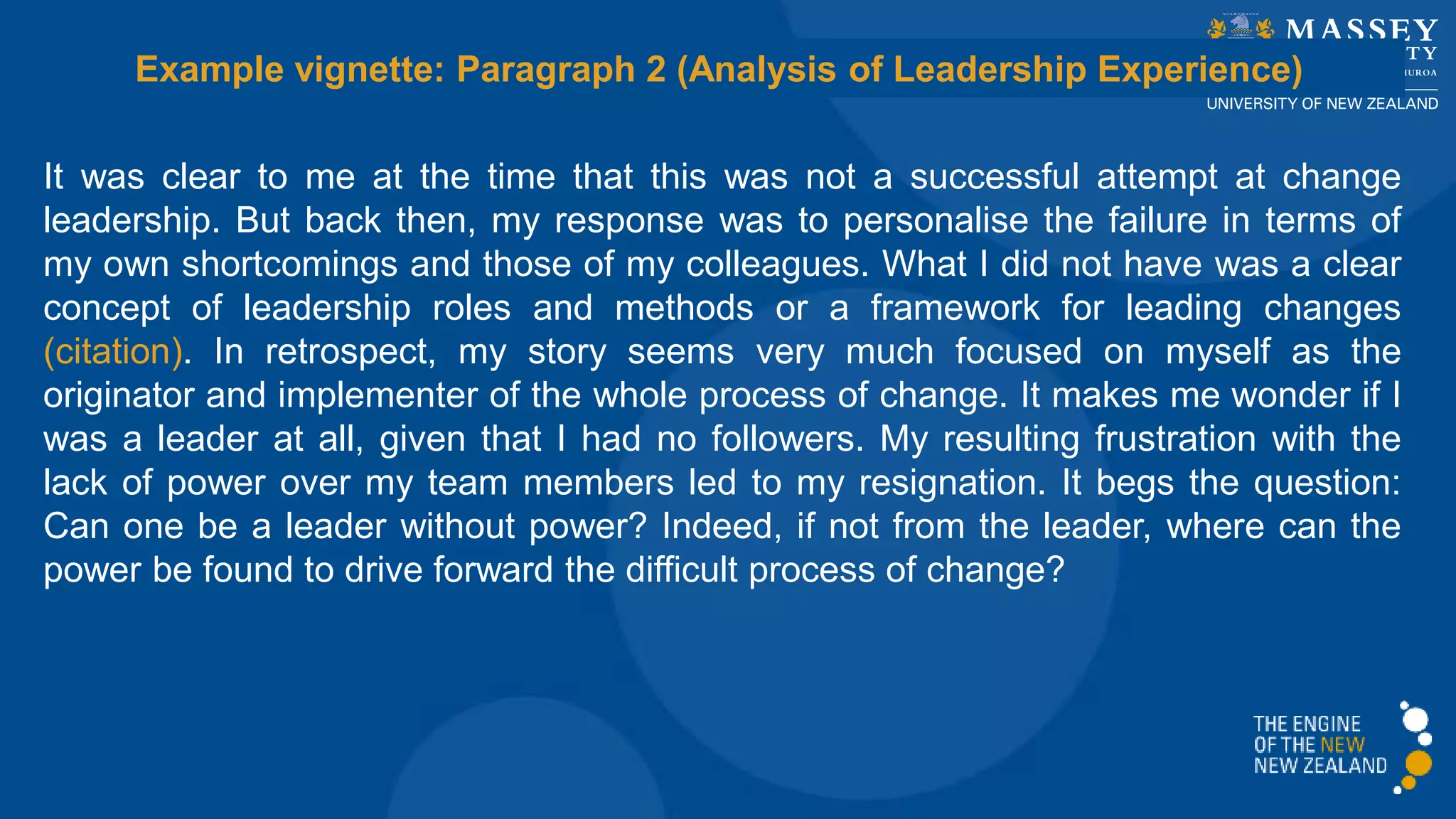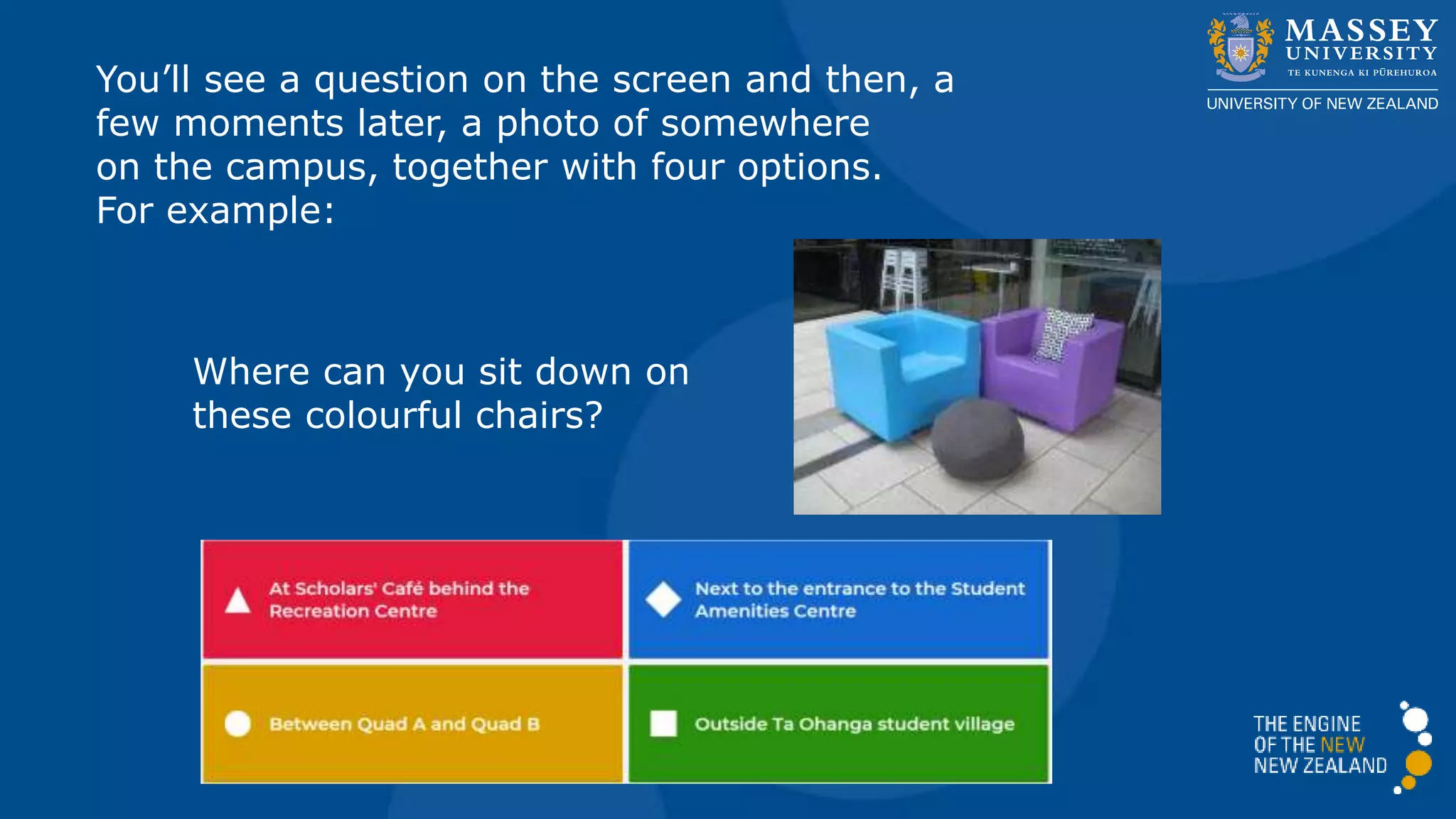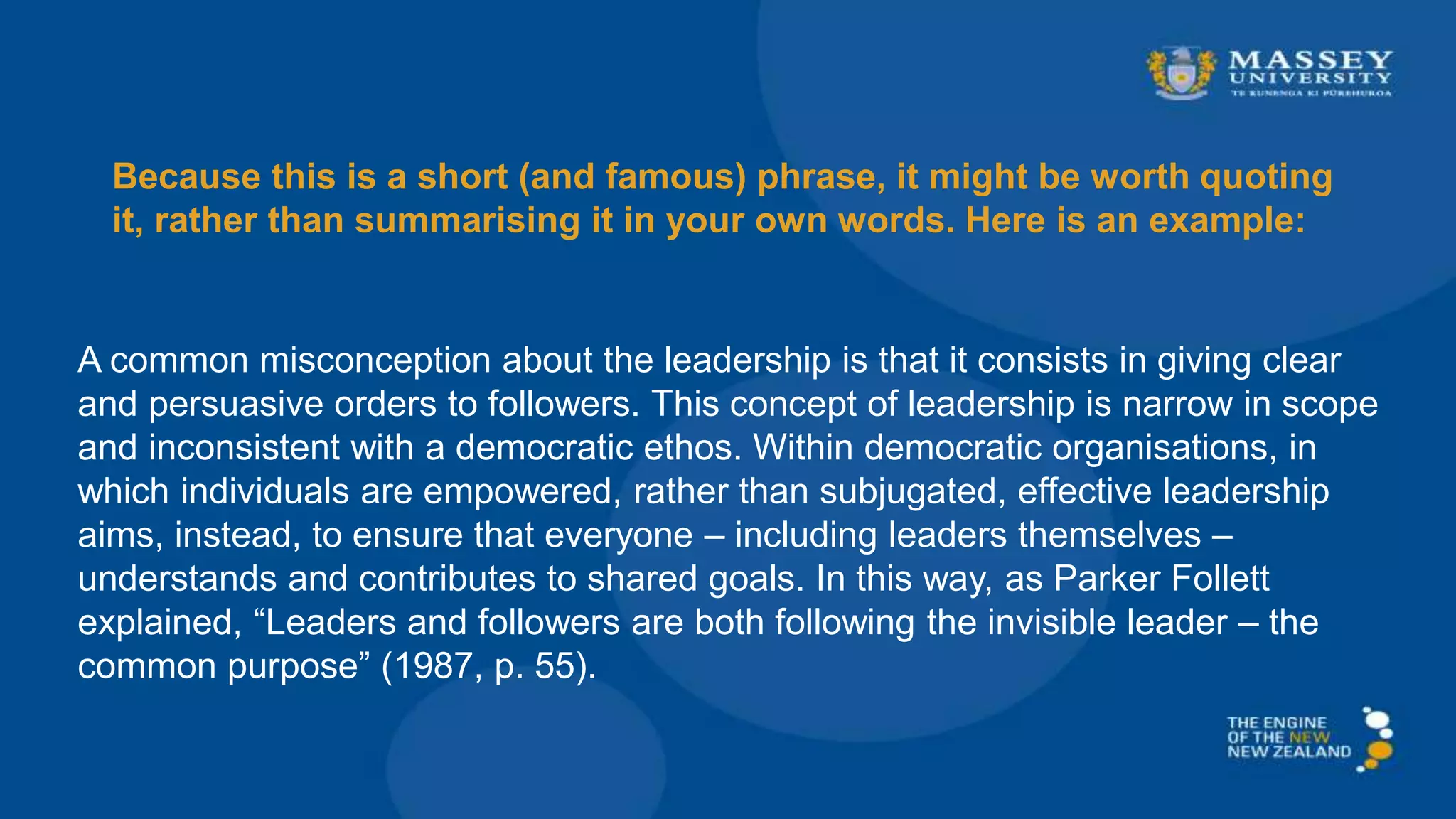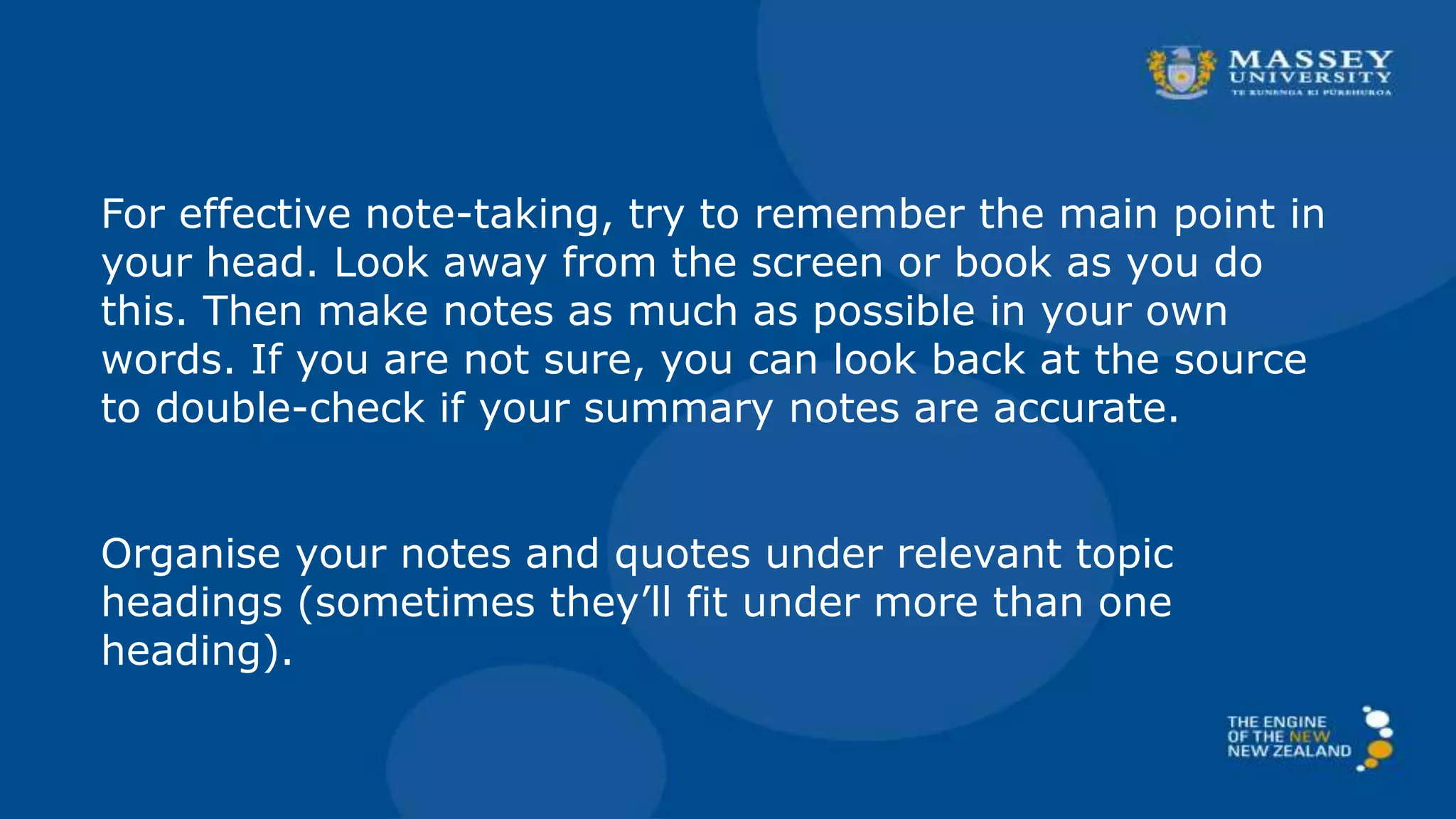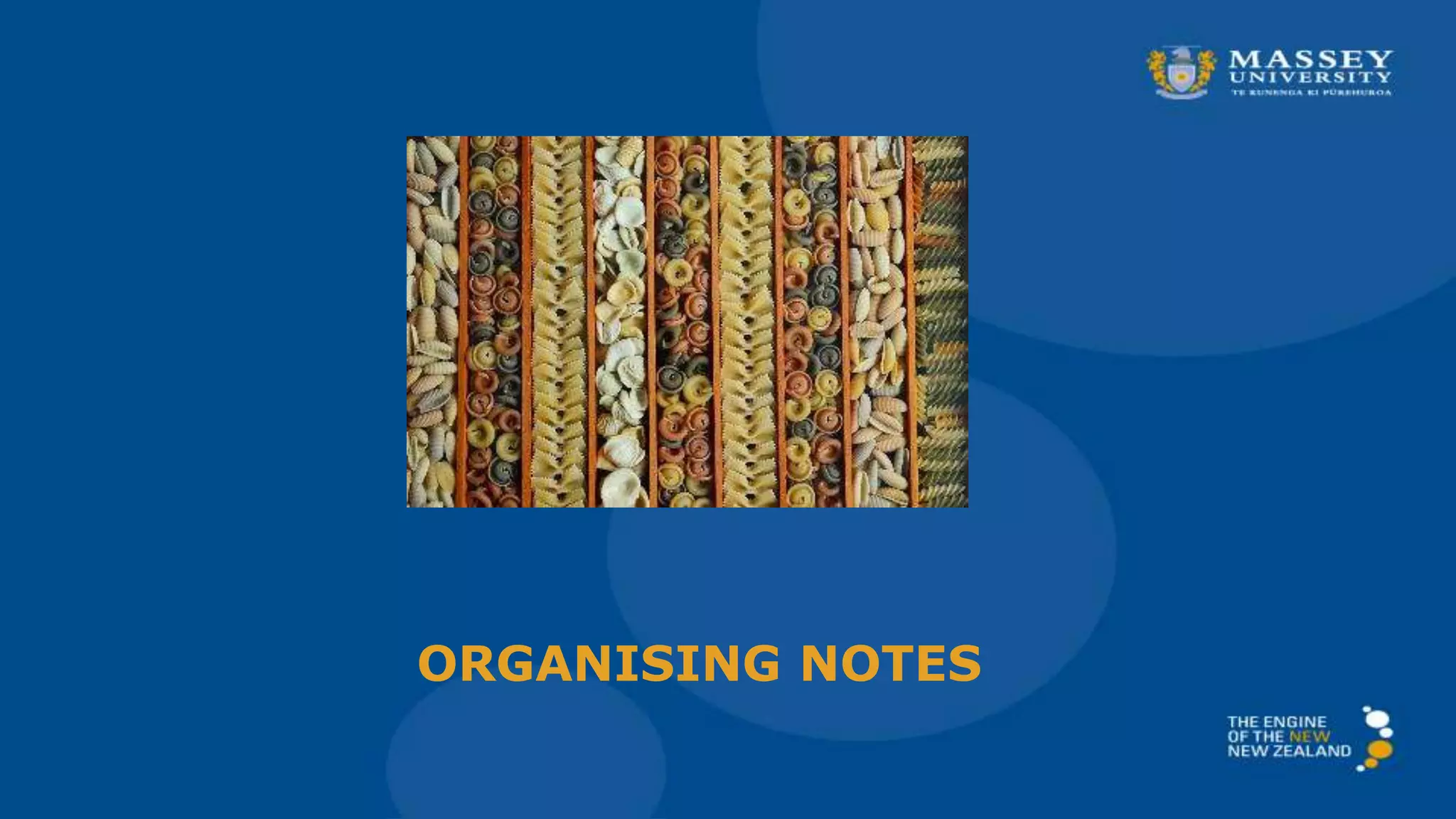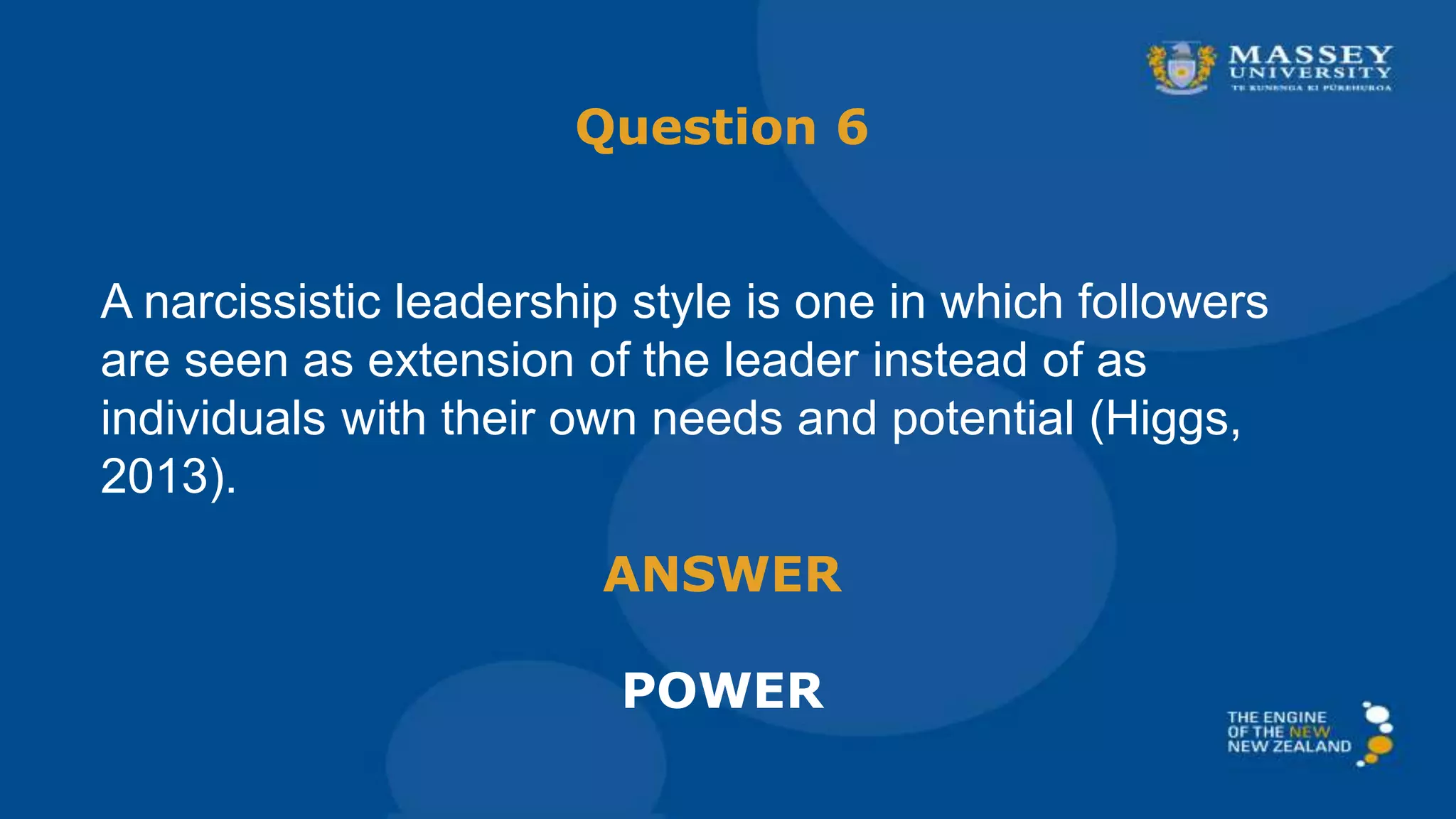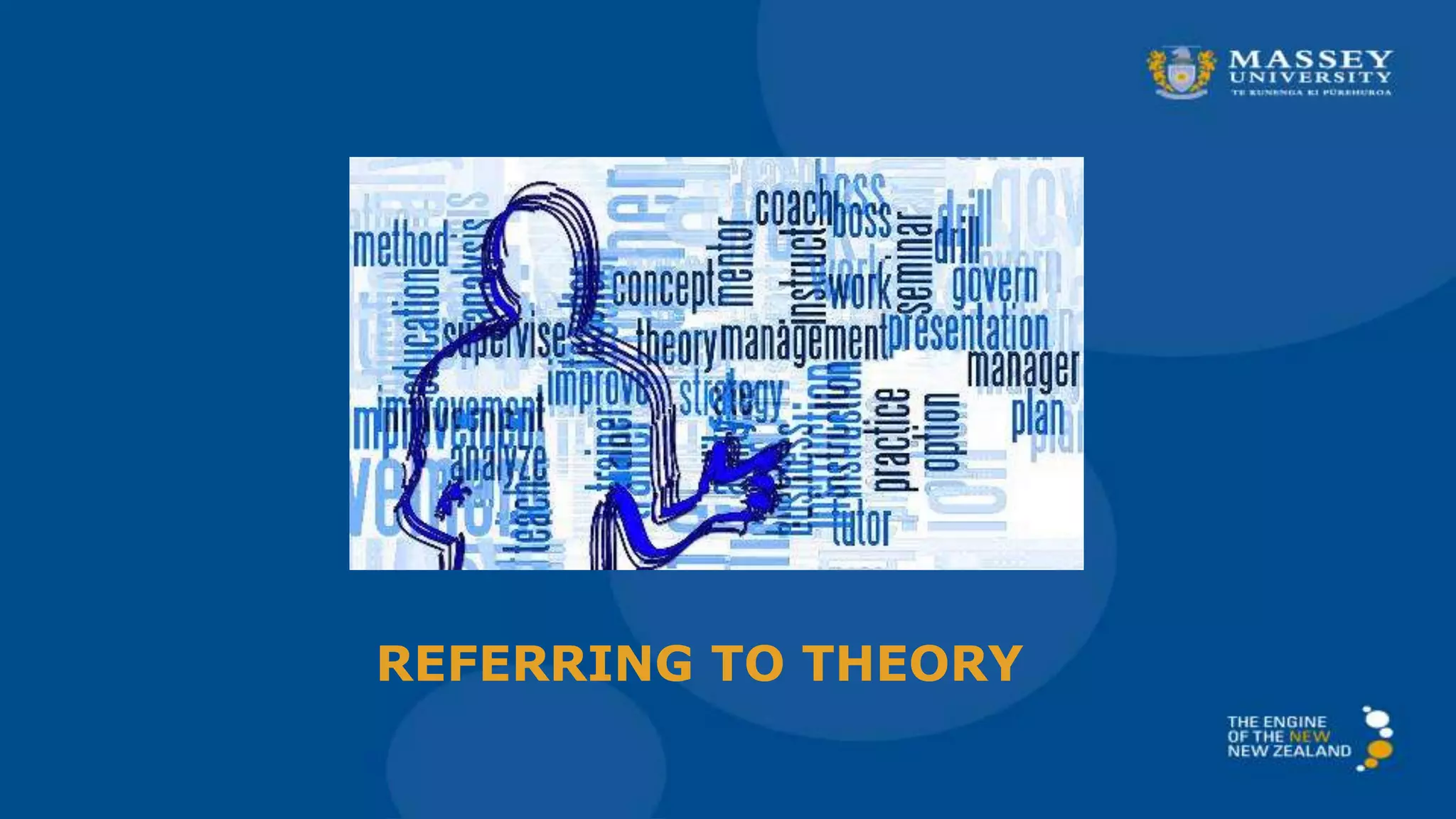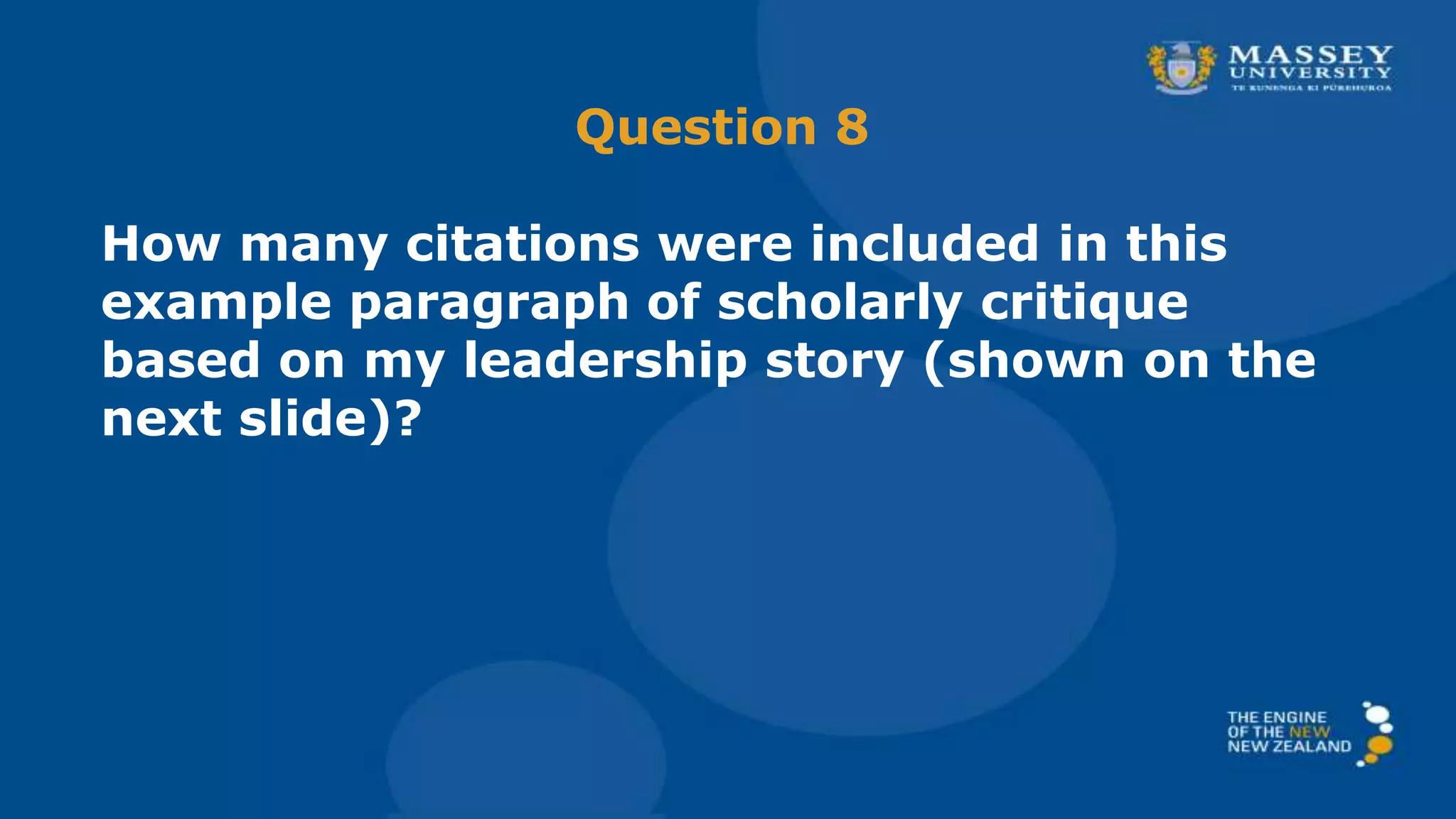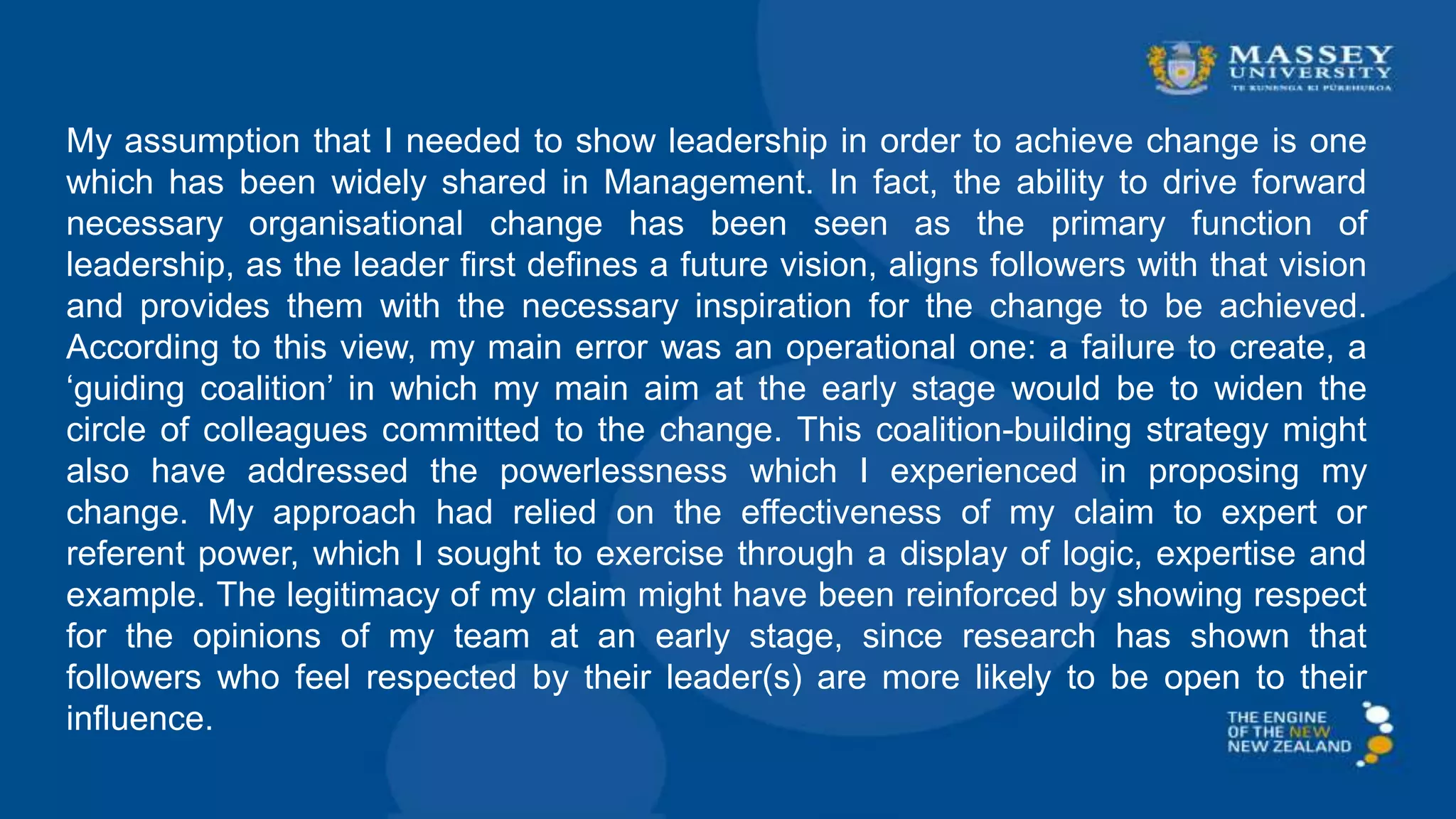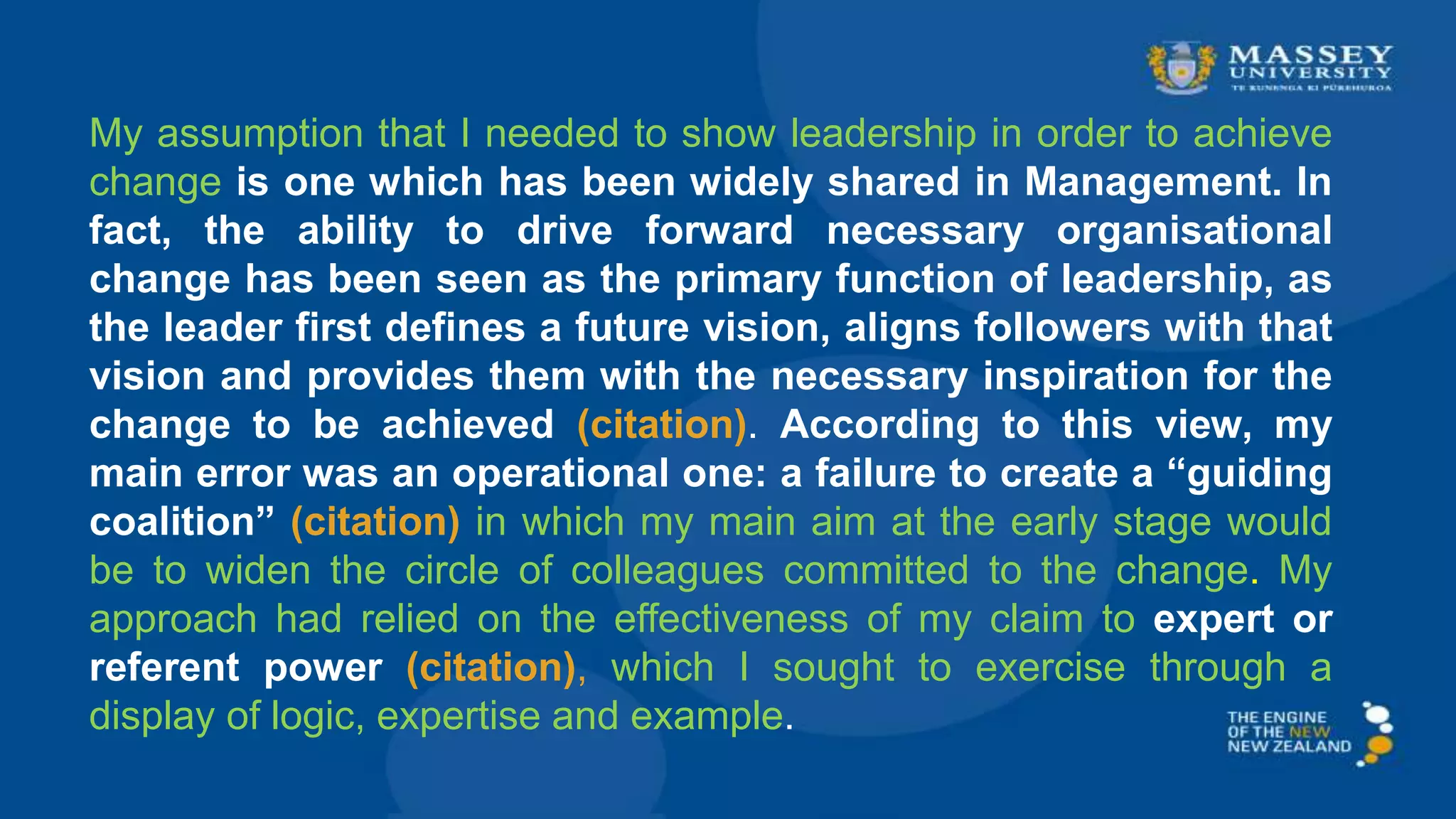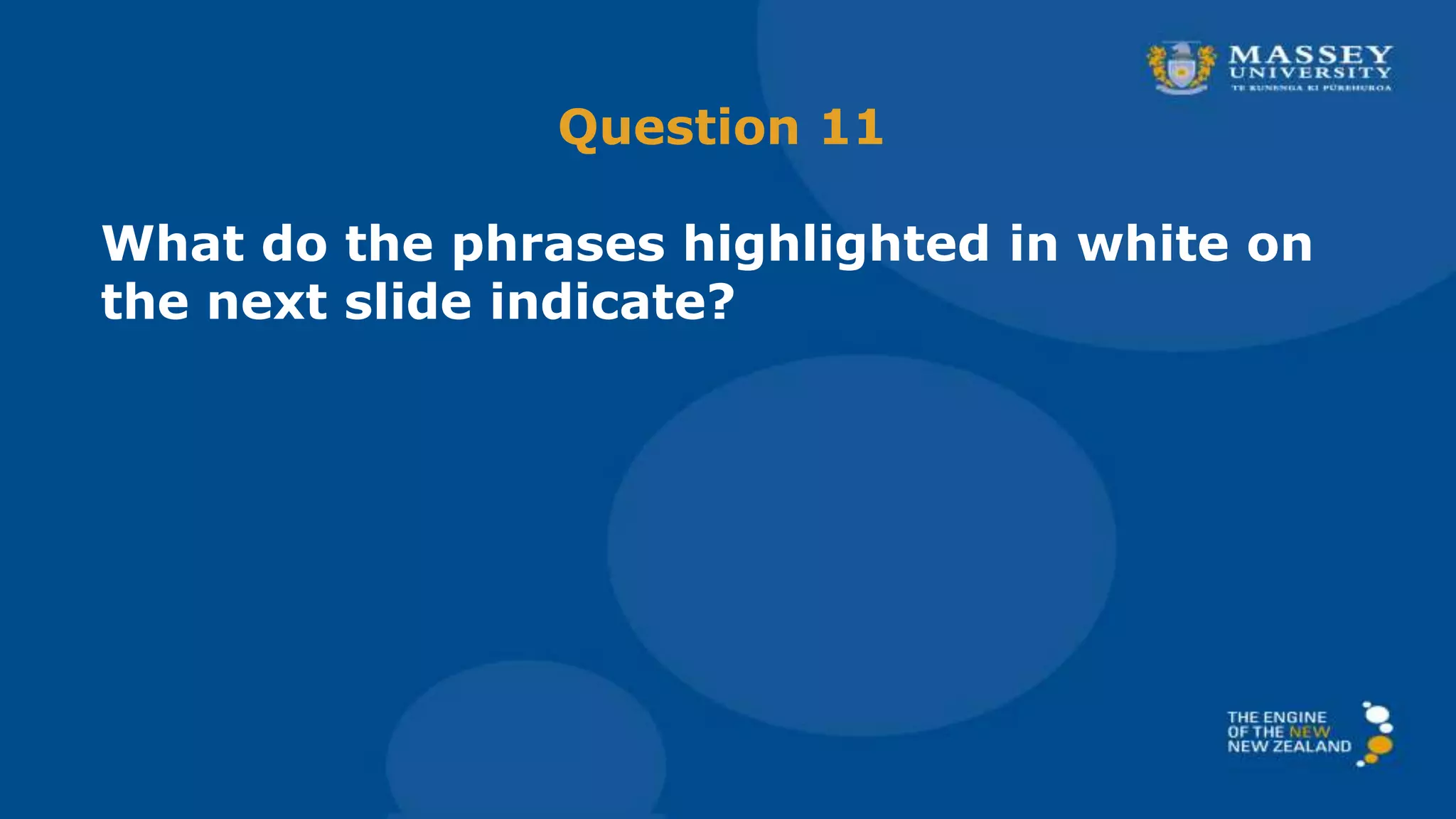The document outlines a writing workshop focused on leadership change, where participants examine their leadership experiences and critique them. It includes a personal vignette about the author's failure to lead change effectively due to a lack of followership and understanding of power dynamics within their team. The workshop encourages reflection on management theories and their application to personal experiences to enhance leadership understanding.
